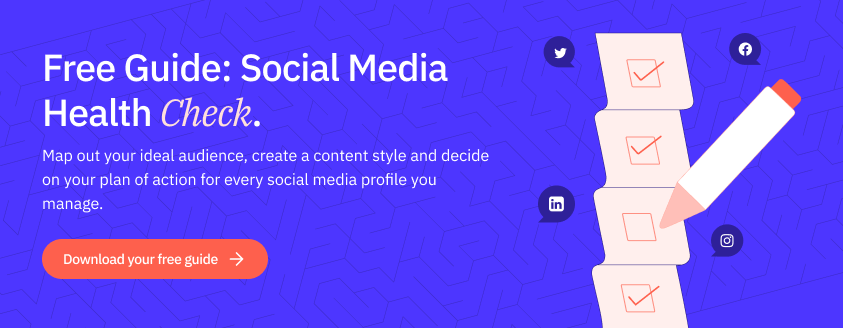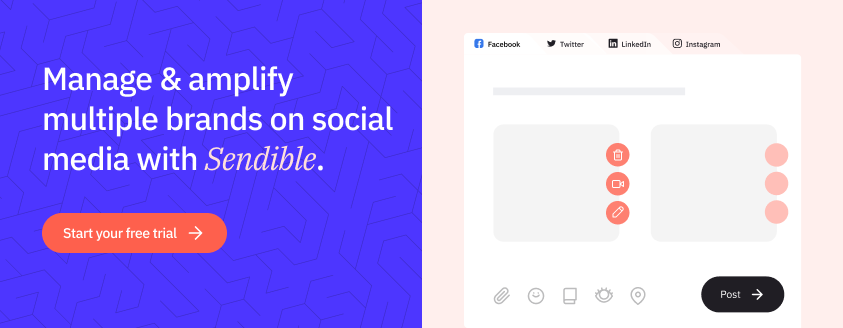You probably already know that not being on Facebook isn't an option for businesses any more.
If you don't, take my word for it.
If you don't want to take my word for it, let me give you a little nudge via some quick data.
Millennials, the generation born between the early 1980s and mid-1990s, now outnumber the baby-boomer generation. In a nutshell, that means a huge population of purchasing power. Ignoring this group is, at the very least, not a wise idea if you want to stay in business.
Looking only at the dining-out habits of millennials, we find the following:
- 65% consider social media discussions about restaurants before deciding where to go.
- 32% check the menu online from their smartphone.
- They trust word-of-mouth recommendations and online reviews from social media and review sites like Yelp over advertising.
We know right away, without any further data, that this is a mobile and social crowd. And with 2.9 billion monthly active users, Facebook is still the largest social media platform on the web. It only makes sense to take full advantage of it, so we have eight timeless tips to help you out:
- Never ignore your audience
- Give them value
- Link to yourself
- Every feature has a purpose
- Optimise for mobile
- Use check-ins
- Measure your ROI
- Convert fans to customers
1. Never ignore your audience
Reply to every single comment on your Facebook Page.
You wouldn't let a customer walk through your door without being acknowledged, would you?
A strong community is possibly the greatest asset you can have on social media. Community management can help you:
- Override customer service
- Help your potential customers right then and there
- Change negative experience into a positive one
- Gather valuable insights that can improve your overall marketing strategy
Sendible’s social media management software can lend a helping hand, unifying your social media profiles into one priority inbox so you can see the messages you need to reply back too across all of your social media platforms.
 You can also use this feature to delegate messages such as sales opportunities and support issues to colleagues to help provide a better, more efficient customer service.
You can also use this feature to delegate messages such as sales opportunities and support issues to colleagues to help provide a better, more efficient customer service.
2. Give them value
Sure, cat memes are funny, but do they have anything to do with your business?
Here is the great conundrum of posting, that of balancing self-promotion with keeping the interest of your fans. Fortunately, there's a rule that holds true the majority of the time called the 80/20 value rule.
It says that (blatant) self-promotion should never exceed 20% of your social posts. That includes sales, discounts, and even general information about your company specifically.
The other 80% is the tricky part, but it doesn't have to be. Learn to curate articles and other posts from around the web that are related to your business and that are interesting.
Just make sure that you're not promoting a competitor when you do.
Create original posts as well, just keep in mind that they should be interesting, related to your business somehow, and non-promotional.
One out of every five posts should be about you, and the other four should be entertaining and engaging.
The best way to plan and organise your content is by:
- Creating a social media content calendar
- Setting measurable goals
- Experimenting to find the best tempo of publishing posts
3. Link to yourself
Facebook shouldn't be your only online presence.
Different demographics use different sites:
- Google My Business is primarily men in their twenties and thirties who are tech-oriented
- Pinterest is mostly comprised of women in their thirties
- Instagram is very similar to Pinterest with 68% of a female audience. Overall, 38% of female internet users are on Instagram compared with 26% of male internet users
- Twitter audience is 70.4% male, while only 29.6% are female
- TikTok, on the other hand, has 60% female users, and 40% male
A common misconception is that the social media age has marked the death of the website and blog as important. This is not the case at all.
You should definitely have a blog and a website in addition to your social media presence, as well as using tools like email newsletters. While it's easy to get overwhelmed trying to manage too many outlets, you should utilise as many as you can handle to reach the maximum number of potential or existing clients that you can.
Every single one of these outlets should have clearly marked links to every other one and a coordinated strategy in order to create an omnichannel experience.
Make sure people can find you where they are most comfortable. It also helps your search engine ranking.
4. Every feature has a purpose
Facebook has no shortage of tools it provides to businesses in helping to manage their pages and attract fans. A short list of these features includes:
- Business category
- CTA
- Leads center
- Creator Studio
- Events
- Business Apps
- Insights
- Editable sections
- Shop
- Ads
Each of these, as well as the many other tools and features that Facebook has put in place for businesses, serves a purpose and provides you with an advantage in understanding the mechanics of marketing through the site.
Make sure that you understand each one and how it can help you. They will not only help you on the back end of things, but they can help you create the best experience possible for your fans.
There is however a danger of constraining yourself just to Facebook by taking a holistic approach with your digital strategy you reap further benefits by using these tools in conjunction with a more comprehensive platform – Sendible’s social media management dashboard offers the ability to post, monitor, measure and grow activity on multiple social media platforms at once.

Remember that the better the experience for all you’re fans, the better your own experience. That's probably the best tip you'll read, in one short sentence.
5. Optimise for mobile
PWC polled consumers in June 2021 and found that the COVID-19 pandemic had spurred many respondents to become more digital. To be precise - more than 50% of surveyed consumers said they've become more digital.
About 83% of social media usage is on a mobile device, compared to 15% from desktops or laptops.
Making sure that your page is easy to read and navigate from a mobile device like a smartphone or tablet is no longer a secondary consideration for your online strategy.
The viewership of social sites and the web in general, has moved to mobile for the majority of people. Once your Page is set up and optimised for viewing from a computer, you need to then check it from a mobile device.
Make sure that your cover image is easily discernible on a smaller screen and that your layout is adjusted so that anyone viewing from their phone or tablet has as good an experience (or better) as those viewing from their desktop or laptop.
Pay attention to the format of your posts as well. As mobile screens are vertical, you need to make sure your posts cover as much of the Feed's space as possible. This is why it's better to opt for a 4:5 format.
 Create engaging designs including social media images for networks like Facebook. Sendible pulls your designs directly into the Compose Box, ready for publishing.
Create engaging designs including social media images for networks like Facebook. Sendible pulls your designs directly into the Compose Box, ready for publishing.
6. Use check-ins
Check-ins all started with the rise of the Foursquare app, but they have been adopted since by most other widespread social sites and apps, including Meta suite.
Together with hashtags, check-ins are a great way to get discovered by a new audience.
Encourage your fans and customers to check-in at your business, if it's applicable. Word-of-mouth advertising is the kind of recommendation that millennials trust above all others.
Put these two practices into play right away. Go forth and conquer the social space before your competitor does. Track your progress, grow your fans and monitor your competition using a comprehensive social media management tool.
7. Measure your ROI
In addition to all of the previous tips, there are a plethora of other things you need to remember and handle on a daily basis when it comes to social media in general.
It can be a lot to handle for one person or even a small team, even if they hold full-time positions as social media and community managers. Facebook can't be your only outlet online if you really want to be competitive. Using other networks like
and managing a website, blog, or any other number of possible options is the best way to make sure that you reach every demographic you are after.
Thankfully there are tools which make the social media management process easier and do far more than that.
Measuring your ROI is a business necessity in any venture unless you just want to waste time and money. Good social media management software gives you an edge over those companies who either don't use one or who limit themselves in the name of saving time and/or money. The right dashboard will save you more time and increase your chances to expand revenue far more than any shortcuts could ever hope to.
While a good social dashboard will allow your manager or team to effectively schedule posts and track engagement, it also does a lot more than that.
Reports and analytics are absolutely necessary for measuring your ROI. They will do all of the tracking for you, leaving you only having to act on the data rather than collect it first as well.
Two beautiful features they offer are letting you know when exactly is the optimal time to schedule your posts based on user engagement, and which posts your followers are actually paying attention to and sharing. You have to know these two things to ensure that your efforts are translating into business.
8. Convert fans to customers
A "Like" is not necessarily a sale, but it can be if it's managed correctly.
This is really a recap of the first two tips in this series, but they bear emphasising because it is your part of the interaction that determines whether or not your social media presence is something that brings you more business or just something fun that you do online (translation: a waste of time and money).
Using the 80/20 rule is important because it is what draws your audience in and captures their attention.
Responding to your audience is important because over 80% of social customers will abandon a purchase because of poor customer service.
Make no mistake, every comment you reply to is a form of customer service, and conversely so is every comment you don't reply to.





